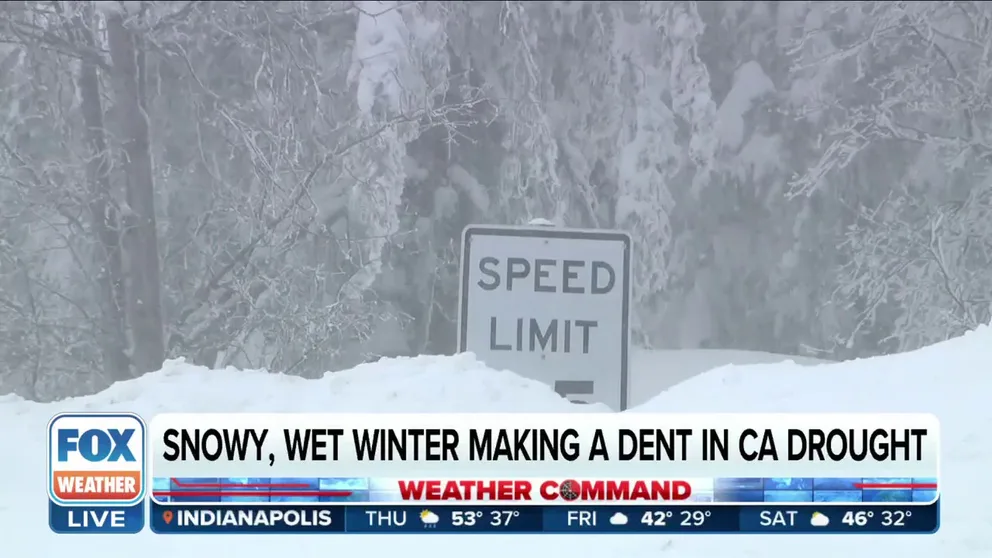Drought marches on for parts of California despite historic rainfall, snow
After a 3 year rain and snow hiatus, California has been bombarded by storms this winter. But has all the recent rain and snow brought The Golden State out of the drought?
Is California out of the drought?
After historic rain and snow hit California week after week this winter, progress shows in the Drought Monitor. Meteorologist and Drought Monitor author, Brad Pugh visits FOX Weather to explain the current drought status.
Even though California has been bombarded by snow and rain this winter, almost half of the state remains in drought, according to the U.S. Drought Monitor.
"Entering the wet season, much of California was designated with drought. And we've had two episodes of excessive wetness late December through mid-January and then more recently, late February into the beginning of March," Meteorologist and Drought Monitor author Brad Pugh told FOX Weather.
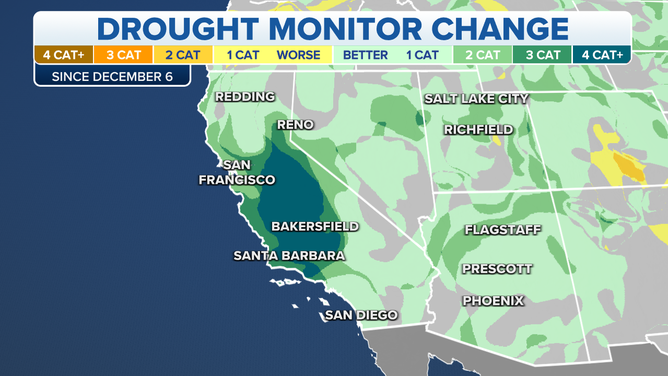
In just 13 weeks, the teal areas of California that were in 'extreme' drought are no longer classified as in drought.
(FOX Weather)
"So the drought coverage is decreased now down to 43% for the state, which is pretty remarkable when you think we were coming off of three very dry winters."
Less than half of the state is in drought
The progress is staggering when compared to the drought picture just three months ago. In early December, over 99% of the state was in drought, 85% in severe drought and 40% in extreme drought.
The U.S. Drought Monitor released on Thursday shows over half of the state not in a drought, for many places the first time in over three years. Over a quarter of the Golden State recovered entirely and is no longer "abnormally dry." And while no state area is classified as in "extreme drought," NOAA still estimates that over 5.5 million Californians are still living with drought.
THE US DROUGHT MONITOR EXPLAINED
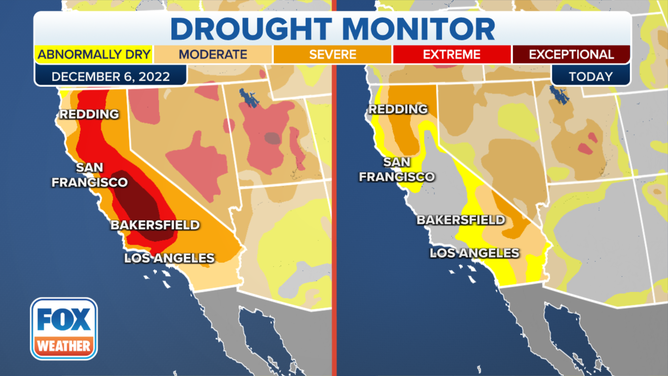
(FOX Weather)
"We still have low groundwater coming off those three very dry years. So, even though there's been improvement with the very wet winter for much of the state, there still are some concerns with the low groundwater," Pugh said. "And also as you go up towards extreme northern California, towards Oregon, that has been a little more dry this past winter."
Thursday's drought monitor states that rain and snow deficits, soil moisture and stream flow rates have improved. Unfortunately, groundwater levels (aquifers feeding wells) and reservoir storage remain low and take longer to recover.
ONGOING 22-YEAR DROUGHT IN WESTERN US IS DRIEST PERIOD IN OVER 1,200 YEARS, STUDY FINDS
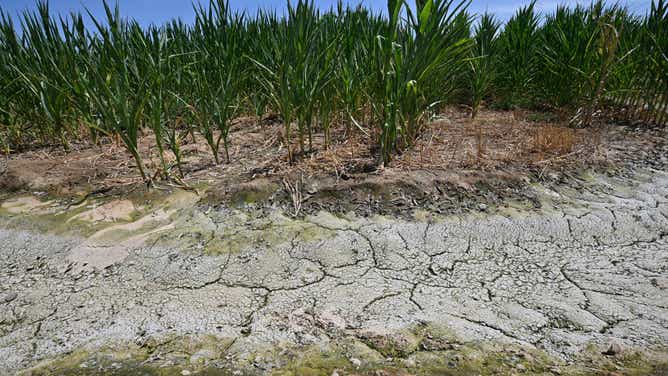
The dried and cracked soil in an irrigation ditch next to a corn field is seen on a farm in Fresno, California, July 24, 2021.
(ROBYN BECK/AFP via Getty Images / Getty Images)
Erasing drought won't happen in a year
The California Department of Water Resources director said that erasing drought statewide can’t completely happen in one year.
"Thankfully, the recent storms combined with the January atmospheric rivers have contributed to an above-average snowpack that will help fill some of the state’s reservoirs and maximize groundwater recharge efforts," said Director Karla Nemeth. "But the benefits vary by region, and the Northern Sierra, home to the state’s largest reservoir Lake Shasta, is lagging behind the rest of the Sierra."
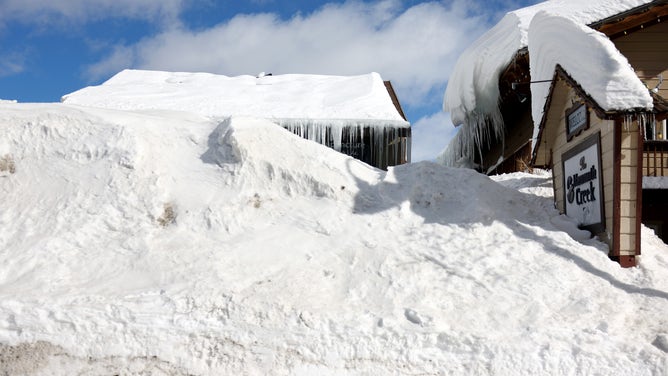
A snowbank is viewed in front of a hotel after a series of atmospheric river storms brought heavy snowfall to the region on January 22, 2023 in Mammoth Lakes, California.
(Getty Images)
"It will also take more than one good year to begin recovery of the state’s groundwater basins," she continued.
Too much rain and snow?
California’s March atmospheric river is also a big concern, along with the near-record snowpack.
"The recent storms over the past week broke a month-long dry spell in a dramatic way," said DWR’s Snow Surveys and Water Supply Forecasting Unit Manager Sean de Guzman in a statement recently. "We are hopeful that we will see more cold storms to add to our snowpack and help set up a long, slow melt period into spring."
SNOWFALL CONSIDERED CRUCIAL FOR LONG-TERM DROUGHT MITIGATION
But the atmospheric river system is not a cold storm and could rapidly melt mountain snow. The runoff would fill reservoirs. But, the DWR has recently been releasing water from the massive lakes for flood control. In other words, snow that melts too fast can’t be collected from mountains that account for about 30% of California’s water supply.
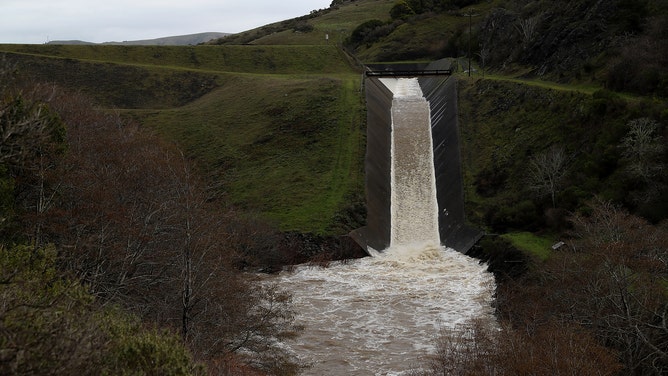
File: The DWR releasing water from the Nicasio Reservoir in January 2017 during drought busting atmospheric river storms.
(Justin Sullivan / Getty Images)
"It's both a benefit and a hazard. It's obviously a benefit for the snowpack and the water resources down the road. I mean, the snow is such a critical factor to the water resources of California," said Pugh. "But when they come in, these very heavy bouts of precipitation seen over the next 24 to 48 hours with some flooding as well, that's a hazard with these atmospheric river events."
Per executive order by California Governor Gavin Newsom, state agencies will review the state of the drought and provide recommendations on the state's response by the end of April. Residents and businesses will have to continue to adhere to emergency provisions enacted, like water cuts and fines.
CALIFORNIA BLANKETED IN FLOOD ALERTS AS ATMOSPHERIC RIVER BEGINS RAINY, SNOWY ASSAULT
Keep tabs of the FOX Weather app, watch FOX Weather on TV or your mobile device and go to FOXWeather.com for constant updates on potential California flooding.
